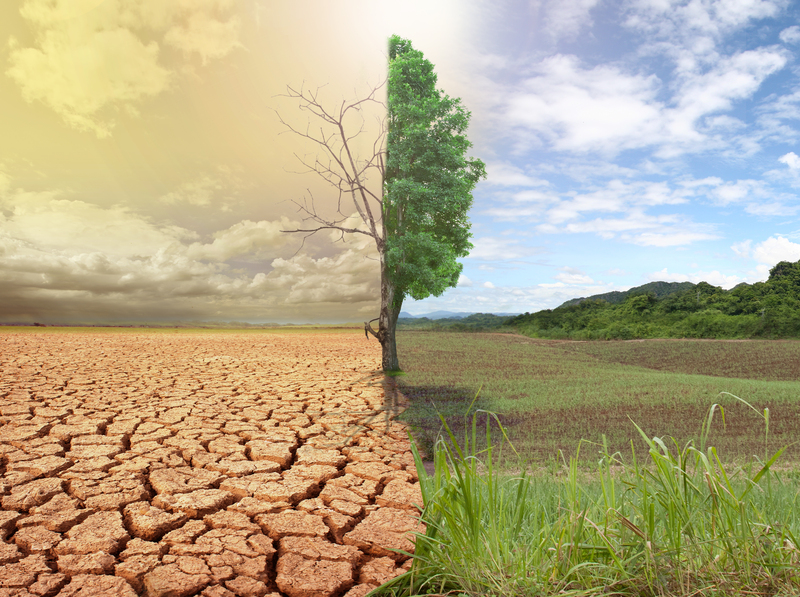Waste Clearance Services as Guardians of Community Health
In our rapidly urbanizing world, waste management has emerged as a pressing concern for both environmental sustainability and public health. Waste clearance services have become central guardians of community well-being. These specialized services do much more than just haul away trash; they underpin our health, safety, and quality of life in countless, often invisible, ways. This comprehensive article explores their vital roles, the health risks they mitigate, and the sustainable practices shaping the future of waste removal.

The Pivotal Importance of Waste Clearance in Modern Society
Waste clearance services serve as the linchpin of public health infrastructure. As urban populations swell and consumption patterns intensify, the volume and variety of waste generated escalate exponentially. Unchecked accumulation of waste not only tarnishes the landscape but also breeds conditions for disease, contamination, and social decline.
- Urban Health Risks: Dense populations generate solid, organic, electronic, and hazardous wastes. Without rapid removal, these piles can become breeding grounds for pathogens, vectors, and pollution.
- Environmental Stewardship: By systematically collecting, sorting, and disposing of waste, waste clearance companies curb soil, air, and water pollution, supporting overall ecological balance.
- Resource Recovery: Advanced clearance services not only remove trash but also facilitate recycling, composting, and responsible disposal, promoting a circular economy.
Effective waste removal services foster cleaner neighborhoods, safer environments, and healthier communities. Let's examine the multiple ways these professionals protect community health.
How Waste Clearance Services Safeguard Public Health
1. Limiting Disease Transmission
Garbage heaps are notorious for harboring bacteria, viruses, and parasites. Organic waste, in particular, attracts flies, rodents, and insects, all capable of transmitting diseases like Salmonella, Leptospirosis, and more. Timely waste collection and disposal prevents infectious outbreaks by removing these breeding sites before they threaten human health.
2. Preventing Water and Soil Contamination
If left unchecked, waste can seep into soil and leach toxins into groundwater. Leachate from landfills, heavy metals from electronics, and pharmaceutical residues are particularly hazardous. Professional clearance services mitigate this by transporting waste to engineered landfills, recycling centers, or hazardous waste facilities, all designed to minimize environmental impact.
3. Improving Air Quality
Accumulated waste can produce methane, ammonia, and other foul-smelling compounds that not only degrade air quality but also pose respiratory risks. Curbside garbage removal services play a critical role in reducing open burning, illegal dumping, and other practices that contribute to urban smog and toxicity.
4. Protecting Children and Vulnerable Populations
Vulnerable groups such as children, the elderly, and those with compromised immune systems are at greater risk from unsanitary conditions. Schools, playgrounds, and recreational areas require stringent cleanliness. Professional waste removal services ensure these zones remain safe and inviting, directly enhancing the well-being of entire communities.
Types of Waste Clearance Services
The umbrella of waste clearance solutions covers a diverse array of services, each tailored to tackle specific forms of waste and associated health risks.
- Domestic Waste Clearance: Regular household rubbish collection, bulky item removal, garden waste, and seasonal clear-outs.
- Commercial Waste Removal: Offices, restaurants, retail premises, and industrial settings generating specialized waste streams.
- Construction Debris Clearance: Removal of rubble, timber, metal, and hazardous materials after renovations or demolitions.
- Electronic and Hazardous Waste Disposal: Safe removal and recycling of computers, batteries, medical waste, and chemicals.
- Event and Festival Clearance: Temporary, intensive waste management for outdoor functions, public gatherings, or community projects.
Waste collection companies deploy personnel, vehicles, equipment, and technology specific to each challenge, optimizing safety and efficiency.
Innovative Strategies and Sustainable Approaches in Waste Removal
Embracing Green Practices and Technology
Today's leading waste disposal companies are not only fulfilling their traditional roles but are also at the forefront of sustainable innovation.
- Recycling and Resource Recovery: Segregating recyclables at the source, investing in sorting technology, and maximizing material recovery.
- Composting Organic Waste: Transforming kitchen scraps, garden cuttings, and food waste into valuable soil amendments, reducing landfill dependency.
- Eco-Friendly Transportation: Using low-emission vehicles, route optimization software, and logistical support to reduce carbon footprint.
- Smart Waste Monitoring: Leveraging sensors and IoT (Internet of Things) technology to optimize bin collection, reduce overflow, and minimize missed pick-ups.
By adopting such measures, waste clearance providers are rising to meet the twin challenges of protecting public health and advancing environmental sustainability.
Community Education and Engagement
Beyond removal, modern waste clearance businesses engage with the public through:
- Public outreach and recycling education campaigns
- Guidance on proper disposal of hazardous or bulky items
- Incentivizing waste reduction and composting at the community level
By empowering individuals with knowledge, they foster long-term behavioral change that supports cleaner, healthier neighborhoods.
The Cost of Inaction: Health and Societal Consequences
Failing to invest in professional waste clearance programs can have dire repercussions:
- Rapid spread of vector-borne and waterborne diseases
- Deterioration of mental and physical well-being due to unsightly or unsanitary environments
- Escalation of fire risks from rubbish build-up in urban zones
- Loss of property value and diminished civic pride
- Long-term environmental contamination impairing agriculture and natural resources
Community cleanliness is a shared responsibility, but efficient and ethical waste management services underpin success by providing the necessary backbone for safe disposal and recycling.
Choosing the Right Waste Clearance Service for Your Community
With numerous providers in the market, selecting the most suitable waste removal partner can make all the difference for community health and compliance.
Key Criteria for Evaluation
- Licensing and Regulatory Compliance: Confirm that the company adheres to state, local, or national guidelines for safe waste removal and disposal.
- Range of Services: Ensure they offer all necessary waste streams, from regular household waste to hazardous material disposal.
- Recycling Initiatives: A reputable provider should prioritize zero landfill and strive for high recycling rates.
- Reliability and Reputation: Check customer reviews, response times, and the consistency of service.
- Transparency of Pricing: Seek clear, upfront quotes without hidden costs.
Supporting Local and Ethical Businesses
Whenever possible, consider partnering with waste clearance providers who:
- Hire local staff and train them in safe waste handling
- Invest in community projects and environmental initiatives
- Advocate for social responsibility and environmental justice
Ethical waste clearance ensures that both people and planet are cared for now and in the future.

The Future of Waste Clearance: Emerging Trends and Opportunities
The field of waste clearance is rapidly evolving to meet future demands. Here are some trends to watch:
- Zero Waste Cities: Urban initiatives looking to eliminate landfills by maximizing reuse, recycling, and composting.
- Smart Collection Systems: Adoption of artificial intelligence and real-time data for predictive waste management.
- Decentralized Composting: Neighborhood or even building-scale composting facilities reducing transport emissions.
- Hazardous Waste Monitoring: Stricter tracking and disposal protocols for medical, electronic, and chemical waste.
- Inclusive Partnerships: Collaborations between public agencies, private firms, and non-profit organizations to cover all aspects of community cleanliness.
The continued growth and adaptation of waste clearance services will be fundamental to the health, happiness, and resilience of future communities.
Conclusion: Waste Clearance - The Silent Guardians of Healthy Communities
Waste clearance services play an immense yet often underappreciated role as guardians of community health. From preventing disease outbreaks and reducing pollution to educating the public and innovating for sustainability, their influence is both immediate and long-lasting. By investing in responsible waste management, communities not only safeguard their own health but also contribute to global environmental security.
Choosing the right waste removal partner--one that prioritizes ethical practices, sustainability, and public education--should be a core strategy for any municipality, business, or household dedicated to a cleaner, healthier future.
In the ongoing quest for community well-being, waste clearance professionals stand as the unsung heroes, ensuring our neighborhoods remain not just tidy but truly safe and thriving.
Let us recognize and support their indispensable contributions, and work together towards a world where waste is managed responsibly for the benefit of all.